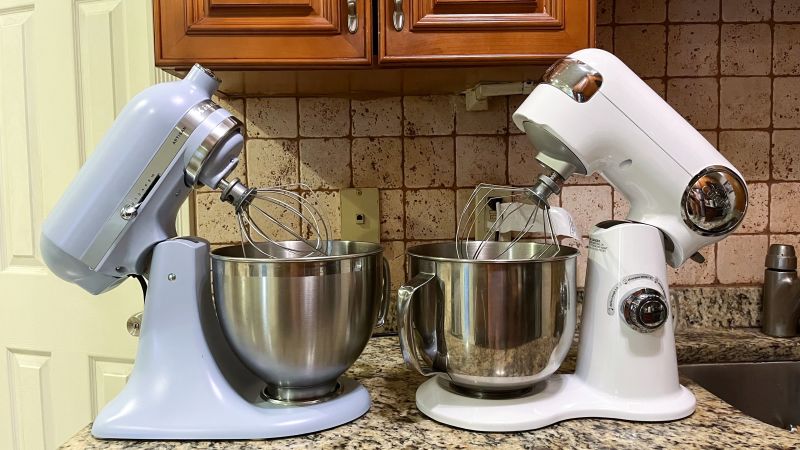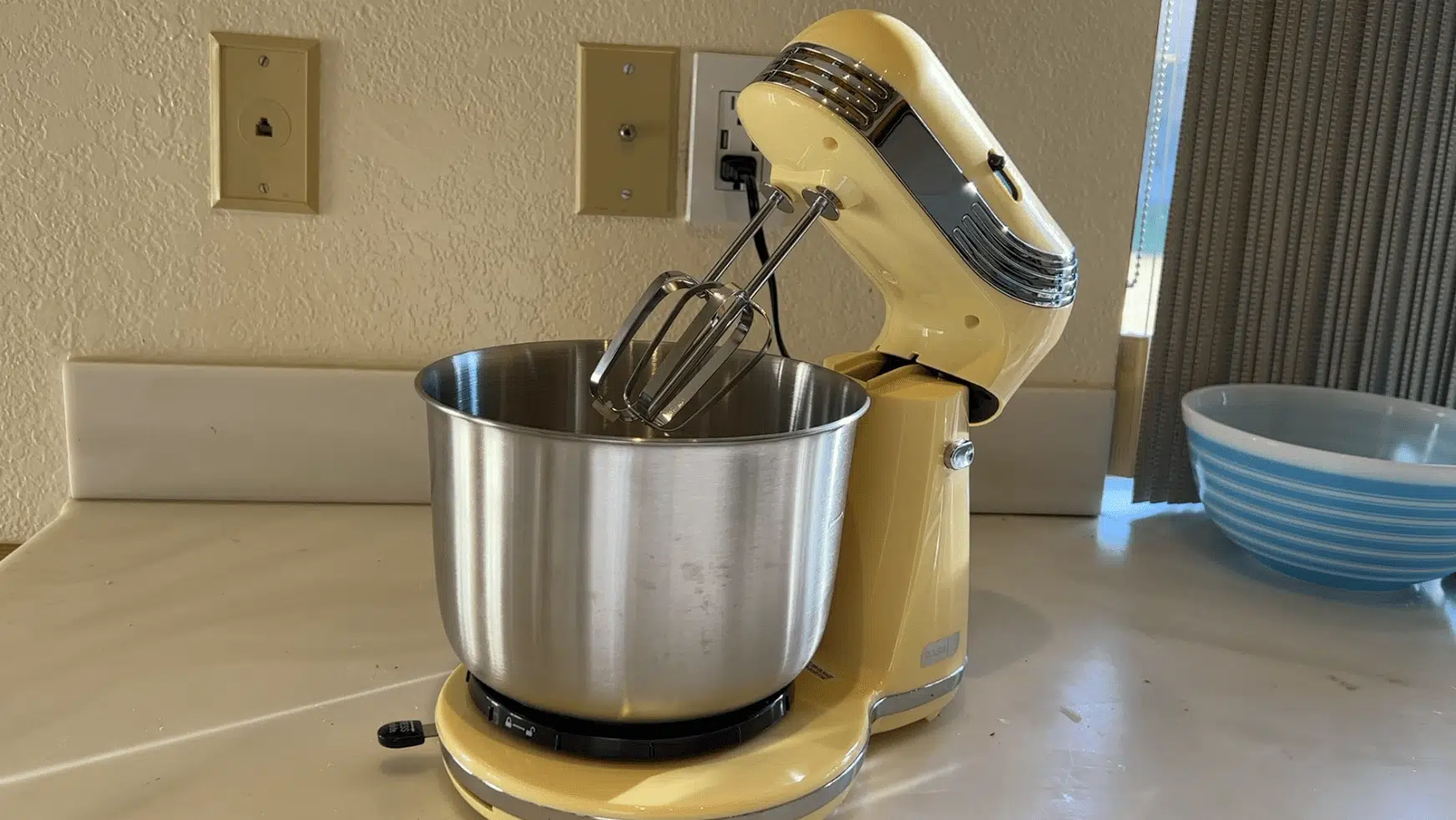There’s nothing quite like the hum of a stand mixer, that trusty kitchen workhorse, whipping up a batch of cookies or kneading the perfect bread dough. It’s the sound of culinary creation. But what happens when that gentle hum turns into a strained groan, and the top of your mixer feels alarmingly hot to the touch? A wave of panic might set in. Before you start imagining expensive repairs or a trip to the appliance graveyard, take a deep breath. Knowing How To Fix Stand Mixer Overheating is often simpler than you think, and we’re here to walk you through it.
An overheating stand mixer is a clear sign that your appliance is under stress. Ignoring it can lead to permanent motor damage, but addressing it promptly can save your machine and get you back to baking in no time. Whether you own a classic KitchenAid, a powerful Kenwood, or any other brand, the principles of motor care are largely the same. Let’s dive into the causes, the immediate fixes, and the long-term preventative measures to keep your beloved kitchen partner running smoothly for years to come. For those looking to understand the intricate mechanics, it’s interesting to see how internal components work; for a deeper dive, you can explore what is the worm gear in a mixer to see how power is transferred inside your machine.
Why Is My Stand Mixer Overheating in the First Place?
First things first, let’s play detective. Understanding why your mixer is getting hot is the key to preventing it from happening again. Most of the time, it boils down to one of these common culprits.
Overworking the Motor with Heavy Dough
This is, without a doubt, the number one reason for an overheating mixer. Dense, low-hydration doughs like those for bagels, pizza, or whole wheat bread put an immense strain on the motor. Think of it like trying to drive a small car up a steep, muddy hill—the engine is going to work extra hard and heat up. Your mixer’s motor is no different. Pushing it beyond its capacity with a stiff dough is a surefire way to make it overheat.
Running It for Too Long Without a Break
Even the most robust mixers need a rest. Kneading a single large batch of bread for 15-20 minutes straight without a pause can cause the motor to overheat, regardless of the dough’s consistency. Like an athlete, the motor generates heat during operation, and continuous use prevents it from dissipating that heat effectively. This is particularly true for less powerful models not designed for marathon baking sessions.
Blocked Air Vents
Your stand mixer has air vents, usually located on the back or sides of the motor head, designed to keep it cool. Over time, these can become clogged with flour dust, grease, and other kitchen debris. When the vents are blocked, cool air can’t get in, and hot air can’t get out. It’s like forcing your mixer to run a marathon while wearing a winter coat—it’s going to overheat.
Internal Mechanical Issues
Sometimes, the problem is under the hood. The grease packed around the gears can degrade over time, becoming less effective at lubrication and heat dissipation. This causes increased friction and, you guessed it, more heat. In rare cases, a failing gear or a worn-out motor component could be the cause. These issues are less common but are a possibility in older, well-loved machines.
The Immediate Action Plan: What to Do When It Overheats
So, you’ve noticed your mixer is hot, maybe you even smell a faint “hot electronics” odor. Don’t panic. Here’s your emergency checklist:
- Stop and Unplug Immediately. This is non-negotiable. The moment you suspect overheating, turn the mixer off and pull the plug from the wall. This cuts power to the motor and prevents any further strain or potential damage.
- Feel the Motor Housing. Carefully touch the top of the mixer head. Is it just warm, or is it uncomfortably hot? A bit of warmth during heavy use (like kneading dough) is normal. Hot is not. If it’s too hot to keep your hand on for more than a second, it has definitely overheated.
- Give It a Serious Time-Out. Let the mixer cool down completely. Don’t be tempted to use it again after just five minutes. Give it a good 30-45 minutes to allow the internal temperature of the motor to return to a safe level.
- Inspect the Air Vents. While it’s cooling, take a look at the ventilation slots. Use a dry brush (like a pastry brush or an old toothbrush) or a can of compressed air to gently clean out any flour or dust that might be clogging them.
- Assess Your Mixture. Take a look at what you were mixing. Is the dough incredibly stiff? Was the bowl overfilled? This will give you clues for what to avoid next time. You may need to finish kneading by hand or split the batch into two smaller ones.
How to Fix Stand Mixer Overheating for Good: Prevention is Key
Once the immediate crisis is over, it’s time to think about long-term strategy. The best way to deal with an overheating mixer is to make sure it never happens again.
Respect Your Mixer’s Capacity
Every stand mixer has its limits. Consult your user manual to understand its capacity, especially for flour and dense doughs. As a rule of thumb, smaller tilt-head models are fantastic for cakes, cookies, and occasional bread, while the larger, more powerful bowl-lift models are better suited for frequent, heavy-duty kneading. If you find yourself consistently making large, stiff batches of dough, you might be pushing your current model too hard. For those who bake in large volumes, considering a stand mixer for professional chefs could be a wise investment, as these are built to handle a much heavier workload.
Master the Art of Kneading
Using a stand mixer for kneading is a game-changer, but it requires the right technique.
- Never exceed Speed 2 when using the dough hook. This is a golden rule for nearly all brands, including KitchenAid. Higher speeds don’t knead the dough faster; they just strain the motor and can damage the gears. The planetary mixing action is designed to be most effective for kneading at low speeds.
- Break it up. If a recipe calls for a very large amount of flour, consider halving it and mixing in two separate batches. Your mixer will thank you.
- Feel the dough. If the dough isn’t coming together and the mixer is struggling to “grab” it, add liquid a teaspoon at a time until it becomes more pliable.
As renowned pastry chef Isabella Rossi often says, “Your stand mixer is a partner, not a workhorse. Listen to its sounds. If it’s straining, it’s telling you something is wrong. Respect that, and it will serve you well for decades.”
Regular Maintenance is Your Best Friend
A little TLC goes a long way.
- Keep it Clean: After each use, wipe down the entire mixer body, paying special attention to the air vents. A quick wipe prevents build-up.
- Listen for Strange Noises: Grinding, clicking, or squealing sounds can be early warning signs of internal issues like failing gears or old grease.
- Consider a “Tune-Up”: For machines that are used heavily or are over a decade old, it might be worth having a professional service it. They can replace the old grease and inspect the gears and motor brushes to ensure everything is in top shape.
When to Seek Professional Help
If you’ve followed all these steps and your mixer continues to overheat with even light loads, or if you see smoke or leaking grease, it’s time to stop using it and seek help. These are signs of a more serious internal problem. Check your manufacturer’s resources to see if you’re still covered; understanding what is the kitchenaid warranty can save you time and money if your appliance is still within its coverage period.
Frequently Asked Questions About Stand Mixer Overheating
Is it normal for my stand mixer to get warm?
Yes, it’s completely normal for the motor housing to become warm to the touch during operation, especially when working on a heavy task like kneading bread for 10 minutes. However, it should not become uncomfortably hot. If you can’t rest your hand on it, it’s overheating.
Can overheating permanently damage my mixer?
Yes, it can. Chronic overheating can wear out the motor, melt the insulation on the internal wiring, and cause the gears to fail prematurely. Addressing the issue the first time it happens is the best way to prevent lasting damage.
How can I tell if the grease in my mixer needs replacing?
The most common signs are the mixer running much hotter than usual, making grinding noises, or a yellow or grey oily substance leaking from the motor head or around the planetary hub. This is a job that can be done at home if you’re comfortable with mechanics, but most people opt for professional servicing.
Does the type of attachment affect the risk of overheating?
Absolutely. The dough hook puts the most strain on the motor by far. The flat beater puts a moderate amount of strain, especially with thick batters like cold cookie dough. The whisk attachment puts the least amount of strain on the motor, as it’s typically used for light liquids.
My mixer smells like burning plastic. What should I do?
Unplug it immediately and do not use it again. A burning smell often indicates a serious electrical issue within the motor. Contact a certified repair technician or the manufacturer for guidance. Do not attempt to fix this yourself unless you are a qualified professional.
Your Mixer is an Investment, Treat It Like One
Your stand mixer is more than just a kitchen appliance; it’s the key to countless delicious creations and cherished memories. Understanding how to fix stand mixer overheating is about protecting that investment. By respecting its limits, using the right techniques, and keeping it clean, you ensure that your trusted baking companion remains cool, calm, and collected for many years of happy baking. Now, let that mixer cool down, and let’s get back to creating something wonderful.